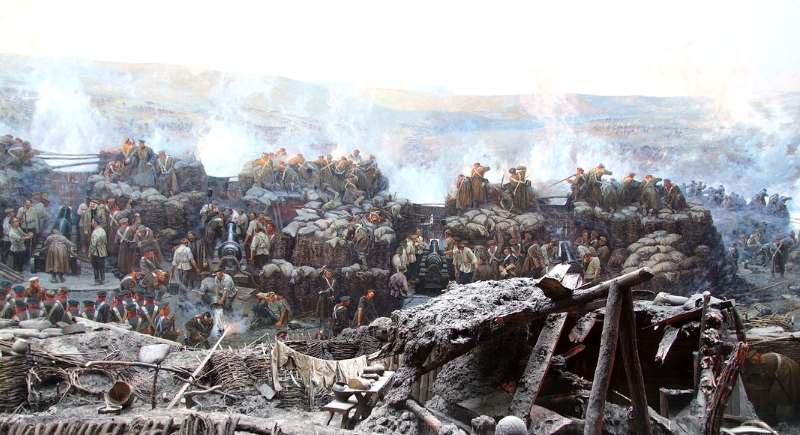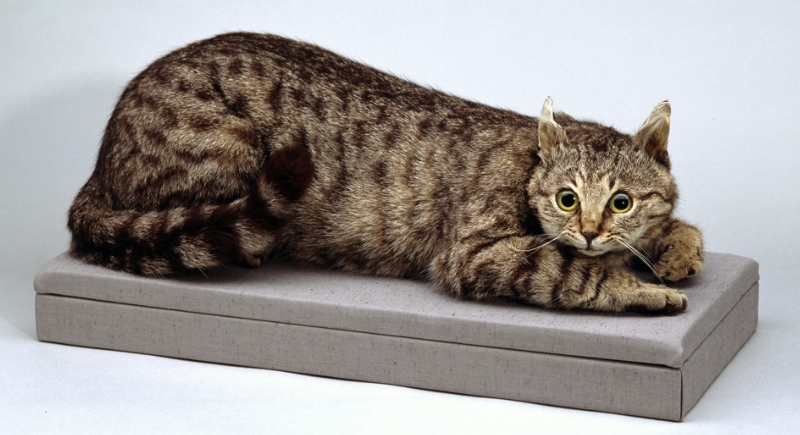The Unlikely Feline Hero Who Saved an Entire Army from Starvation
If you’ve ever read about the Crimean War, you know it as the brutal clash where Russian forces faced off against British, French, and Ottoman troops on the Black Sea. Among the bloodiest points of that campaign was the siege of Sevastopol, a year-long struggle that left the city in ruins. By the winter of 1855, Allied soldiers were camped in the wreckage, worn down by hunger and cold, with little left to scavenge.
It was in this bleak scene that a small, unexpected figure appeared: a grey tabby cat. To one British officer, its sudden presence in the ruined city seemed out of place, yet it would soon guide the way to supplies that broke the grip of starvation on the exhausted troops.
What Had Happened in Sevastopol

Image via Wikimedia Commons/Investigatio
By the war’s closing phase, Sevastopol had become the prize both sides bled for. The long siege ended only when Russian forces finally withdrew, leaving the Allies to occupy a city reduced to rubble. Streets lay deserted, buildings were gutted, and the once-bustling port had the silence of a graveyard.
When soldiers began combing through the ruins, their fears were quickly confirmed: stockpiles were gone, cellars gutted, and what little remained had spoiled in the months of fighting. With no clear line of supply and winter pressing in, the men faced the prospect of starvation in the very city they had fought so hard to take.
How the Well-Fed Cat Drew Attention
Lieutenant William Gair was tasked with organizing efforts to locate any resources still buried under the city. During one of his searches, he spotted a cat that looked completely out of place. It was a grey tabby with a full belly and healthy coat, which was an unusual sight in a place full of starving people and animals.
Gair took notice because the cat’s condition suggested access to food. However, it didn’t scavenge or linger near human camps, but moved through the ruins like it knew where it was going.
The Officers Discovered Buried Stores
Gair was curious about the cat’s well-fed appearance, so he instructed a group of soldiers to keep an eye on its movements. They watched as it slipped between collapsed walls and down narrow alleys, eventually stopping near a section of rubble close to the dockyards. The spot had been blocked off, likely untouched since the final days of the siege.
The men began clearing debris, and as they dug deeper, they struck a concealed entryway. Behind it, they uncovered a sealed Russian storeroom packed with preserved food, such as barrels of grain, sacks of flour, dried vegetables, and salted meat.
The supplies had been hidden underground, possibly as emergency reserves during the retreat. For individuals already on the edge of collapse, it was a lifesaving discovery.
After that, the soldiers continued watching the cat. It returned to similar areas around the area, often near half-buried structures or damaged courtyards. Each time they followed, they found another hidden stash. It became clear the animal hadn’t stumbled into one lucky find. The pattern repeated across several days and suggested that the cat had established familiar hunting routes in areas where food still existed.
The Soldiers Named Him Tom
Once the cat’s role became clear, the forces began calling him Tom. He remained close to the Allied quarters as they settled into what became a temporary stronghold for the winter. The food stores he helped uncover were enough to sustain the units through the coldest months.
Tom Returned to Britain

Image via Wikimedia Commons/National Army Museum London
When the campaign ended, Lieutenant Gair brought Tom back to England as a personal companion. He did not live long after, but Gair chose to preserve him through taxidermy. The mounted cat was donated to a military collection, where it became a symbol of survival and observation.
Today, a cat matching Tom’s description remains part of the National Army Museum’s permanent collection. Its origin cannot be confirmed beyond doubt, but the connection has been repeated often enough that many believe it is the same animal.